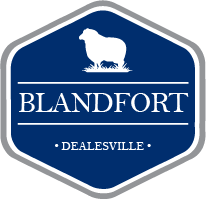The Letelle descends from the Spanish Merino. In 1785 Spanish Merino’s found a home on the French Government’s experimental farm Rambouillet just outside of Paris, and became known as Rambouillets. The Spanish Merino was a plain-bodied sheep carrying fine wool. From France they were exported to other countries including South Africa.
van der WaltIn 1921 – 1922 the original breeder of the Letelle, the late Mr TP van der Walt, acquired 35 large, plain-bodied ewes carrying fine wool from the Barkley East district. They were mainly of the Rambouillet type. He also acquired 3 rams with the same qualities to serve as a nucleus for his breeding plans. His ideal was to breed a polled Merino sheep capable of yielding the maximum amount of wool and mutton per grazing unit. His aim was that the progeny of these sheep would produce good quality mutton at an early age and carry true Merino wool, therefore a balanced Merino adapted to South Africa’s harsh climate.
Furthermore these sheep should have good resistance to diseases and parasites, even the deadly blow fly. His breeding policy was to ensure strong pre-potency, excellent fertility and vitality. He never deviated from the pursuit of this ideal in spite of harsh and subtle criticism. To reach the above ideals he applied line, family and in-breeding principles as well as a strict selection process to achieve the qualities he required in the end product.
The breeder’s main objective was co-operation with Nature which in our country makes exceptional qualities necessary for survival. An acquaintance of the breeder has expressed it thus the “most prominent advantage of in- and in-breeding is the stamping of family characteristics of type and it cannot be dispensed with the formation of new breeds or the improvement of old breeds.” Mallinson C. 1914 – The Merino in South Africa p.48
Only after 25 years of constructive breeding, when he himself was convinced that the type of sheep was indeed the specific type which could without failure transmit the desired uniform qualities in the wool with a sound conformation, good mutton and robust constitution, he declared himself willing to introduce the sheep – a well-balanced, self reliant animal to the public. This introduction appeared in “Die Landbouweek-blad” in September 1935.
In 1980 the Australian Merino Society published the following with regard to the breeding of the Merino:
“The options available to us are:
Do nothing but retain the high standard we believe we have achieved with the Merino. Try and maintain fleece weights while hoping wool prices and meat prices will rise annually. Hope something can be developed which will break the nutritional barrier thereby allowing the Merino to express it’s true potential. We could alter the genetic structure of the Merino and develop another breed. We had no option than to choose the latter.”Since 1924, 56 years before the above-mentioned article appeared in the Australian Merino Society Journal, TP van der Walt altered the genetic structure of the Merino ensuring a medium framed sheep with a mutton conformation carrying fine wool. This was achieved without making use of cross breeding and in harmony with natural grazing conditions
